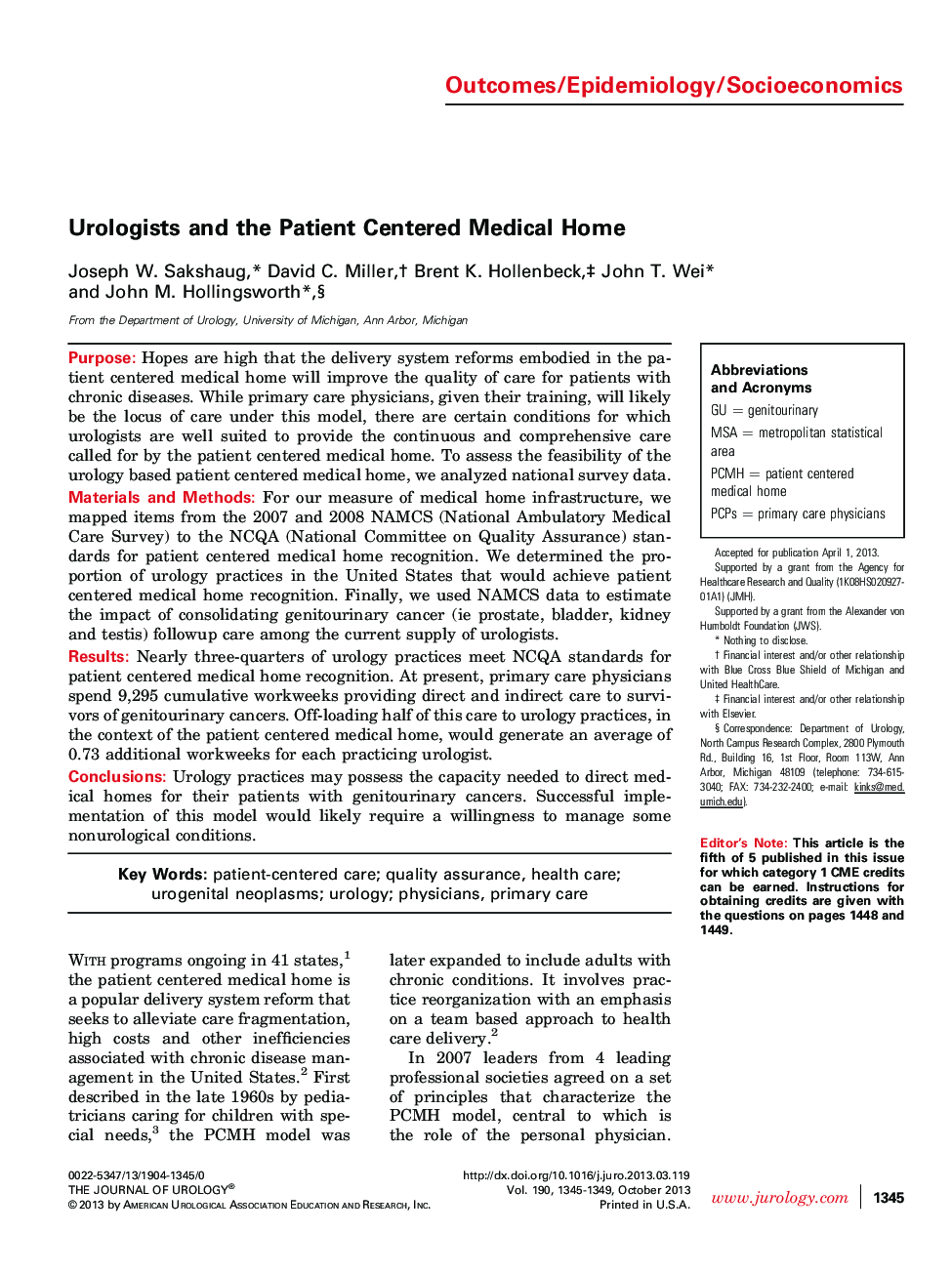| Article ID | Journal | Published Year | Pages | File Type |
|---|---|---|---|---|
| 3864202 | The Journal of Urology | 2013 | 5 Pages |
PurposeHopes are high that the delivery system reforms embodied in the patient centered medical home will improve the quality of care for patients with chronic diseases. While primary care physicians, given their training, will likely be the locus of care under this model, there are certain conditions for which urologists are well suited to provide the continuous and comprehensive care called for by the patient centered medical home. To assess the feasibility of the urology based patient centered medical home, we analyzed national survey data.Materials and MethodsFor our measure of medical home infrastructure, we mapped items from the 2007 and 2008 NAMCS (National Ambulatory Medical Care Survey) to the NCQA (National Committee on Quality Assurance) standards for patient centered medical home recognition. We determined the proportion of urology practices in the United States that would achieve patient centered medical home recognition. Finally, we used NAMCS data to estimate the impact of consolidating genitourinary cancer (ie prostate, bladder, kidney and testis) followup care among the current supply of urologists.ResultsNearly three-quarters of urology practices meet NCQA standards for patient centered medical home recognition. At present, primary care physicians spend 9,295 cumulative workweeks providing direct and indirect care to survivors of genitourinary cancers. Off-loading half of this care to urology practices, in the context of the patient centered medical home, would generate an average of 0.73 additional workweeks for each practicing urologist.ConclusionsUrology practices may possess the capacity needed to direct medical homes for their patients with genitourinary cancers. Successful implementation of this model would likely require a willingness to manage some nonurological conditions.
